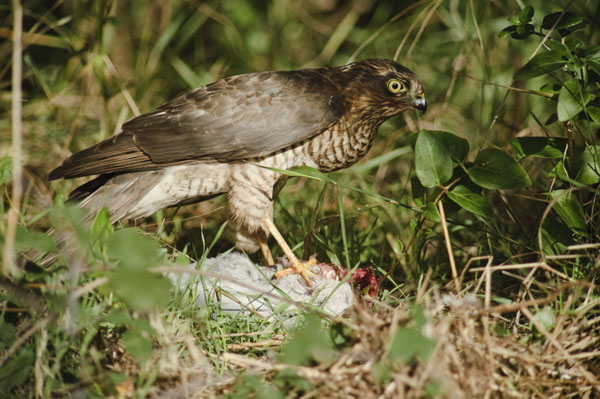Bird photography is not only one of the most popular areas of nature photography but also reasonably challenging. At the outset, two basic problems have to be solved. The first is to gain an understanding of birds in general, and of the particular species being photographed. Without this basic understanding it is very difficult to know how to approach the birds, what to expect in terms of their behaviour and habitat, and even whether your proposed activities are legal. Many birds are protected and must not be disturbed when nesting etc.
The second basic problem faced by every bird photographer is how to get sufficiently close to relatively small and timid subjects to make images worthwhile. It is a sad reflection upon mankind that so many wild creatures regard us as dangerous and to be avoided at all costs. There are a few parts of the world where birds still have little or no fear of human beings. However, it is not a co-incidence that such areas are virtually devoid of human beings. The areas include Antarctica, some of the Galapagos Islands, and remote parts of the Falklands Islands etc.

Understanding of the avian world must be gained progressively, learned by experience and by reading the experiences of others. Countless clubs, organizations, books and internet sites offer information and guidance on every aspect of this popular area of photography, so it is just a matter of making a start and learning day by day. The driving force, as with any area of photography, should be genuine love of the subject. This is what keeps successful photographers going when the weather is cold and wet and difficult and time-consuming problems arise.
The problem of getting sufficiently close to the subjects can be tackled in a number of ways, and typically by using a combination of techniques. Long telephoto lenses are clearly an advantage although they can be heavy and bulky to transport in the field. They are also expensive and need supporting with a good tripod - also heavy and expensive. It is possible to approach birds reasonably closely given appropriate knowledge and a lot of patience. It is essential to spend time in the appropriate habitat and be prepared to wait for many hours or days for opportunities to arise. Nesting birds return regularly to their nests to bring food and incubate eggs so, given the appropriate permission in the case of protected birds, it is possible to set up a hide of some sort in a suitable position. A hide can cause disturbance, so it should normally be positioned well away from a nest and then gradually moved closer as the birds come to accept its presence.
There may also be ways of bringing the birds to the photographer and his or her camera. Many bird photographers know what particular species prefer to eat and then place the appropriate food in an area where it cannot be seen in the photograph. Birds typically approach the food in a step-by-step manner, perhaps initially landing on a nearby tree branch to scout out the area before descending further. All sorts of ruses are possible.






